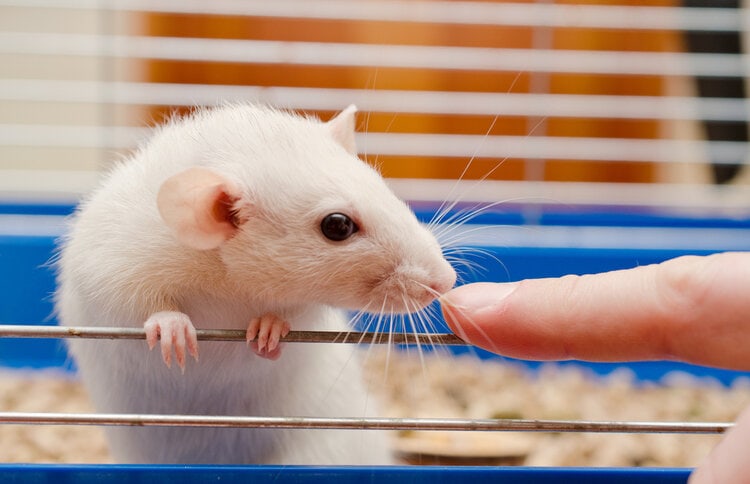
As all rat owners know, our beloved little rodents are quite the piggies. They will take any opportunity they get to stash a snack—and then eat each item in order of their favorites. To prevent malnutrition, you should always feed your rats commercial rat block. However, we acknowledge that they need other menu items, too.
If you’re making a mental list of rat-safe fruits, you might wonder if rats can eat grapes. And the answer is your rats will love grapes, and so will their bodies. But let’s discuss how much, how often, and how grapes benefit your rat’s overall diet.
Grape Nutrition Facts

| Calories: | 62 |
| Carbohydrates: | 16 g |
| Sugar: | 15 g |
| Potassium: | 176 mg |
| Vitamin C: | 6% |
| Iron: | 1% |
| Vitamin B6: | 5% |
Types of Grapes
You can choose from a wide array of grapes—each sporting its own flavor and sweetness. You might notice that your rat takes to one over another. The darker purple the grapes, the sweeter they usually are. Green grapes are generally tarter and punchier.
Here are a few variations you might find in the local supermarket:
Grapes for Rats: Benefits & Concerns

Grapes are packed full of nutrition—plus, they are relatively cheap and easy to find. They make a perfect snack to share with your rats, and your human family can enjoy them, too. Grapes are chock full of potassium, promoting heart health and fluid flow in humans and rats alike.
Occasional grapes in the diet can also boost your rat’s immune system. They ward off potential illness and maintain healthy organ function.
Fruit is full of natural sugar, which is just fine in moderation. However, if you feed them too much, it can cause other health issues—especially obesity. Also, grapes are watery and acidic, making too many a potential trigger for diarrhea.
How to Serve Your Rat Grapes
When you decide to give your rats grapes, the key is to offer correct portions. You should also make each piece edible for your buddy. Rats have very sharp incisors and won’t have a problem cutting through the skin of the grape, but serving bite-size portions that fit in their paws will help.
Before serving, you need to make sure the grapes are safe to eat. If you can, buy organic selections to avoid harmful pesticides or chemicals. If you don’t have organic grapes, always wash the fruit thoroughly to remove any residue.
Cut the grapes into fours for easy snacking. Each of your rats should eat only one grape a piece. Ensure that they don’t have too much in one sitting to avoid gastrointestinal upset or excessive sugar intake.
How Often to Feed Your Rat Grapes

It would help if you only gave rats a grape roughly once a week as an occasional snack. Too many can cause adverse effects. Keep in mind that you can use grapes as a standalone snack or mix them with a healthy blend of other foods.
Natural Rat Diet

Rats are naturally omnivorous creatures and scavenge to find food in the wild. But in captivity, they eat a solid diet of commercial rodent block that has all necessary ingredients for optimal nutrition. Since rats can pick and choose what they like, they can quickly become unhealthy without the proper diet.
Additional Snacks to Consider
Rats are super versatile eaters, so you can give them a large variety of foods to cover many nutritional bases. In addition to grapes, you can add other tasty snacks into their diet. Don’t just stop with grapes—although grapes can be a fantastic reward, especially if you’re trying to teach them tricks.
Here are some other rat-friendly menu items:
Final Thoughts
Grapes can be part of your rat’s regular diet if you make sure to ration them appropriately. Remember that even though your rats will love them—they are full of natural sugar that can lead to weight gain and other health issues.
Feed your rats a full spectrum diet, exploring all the menu possibilities. They won’t turn down a good snack, and you can make sure they stay in top-notch health while they enjoy this delicious fruit.
Related Reads:








